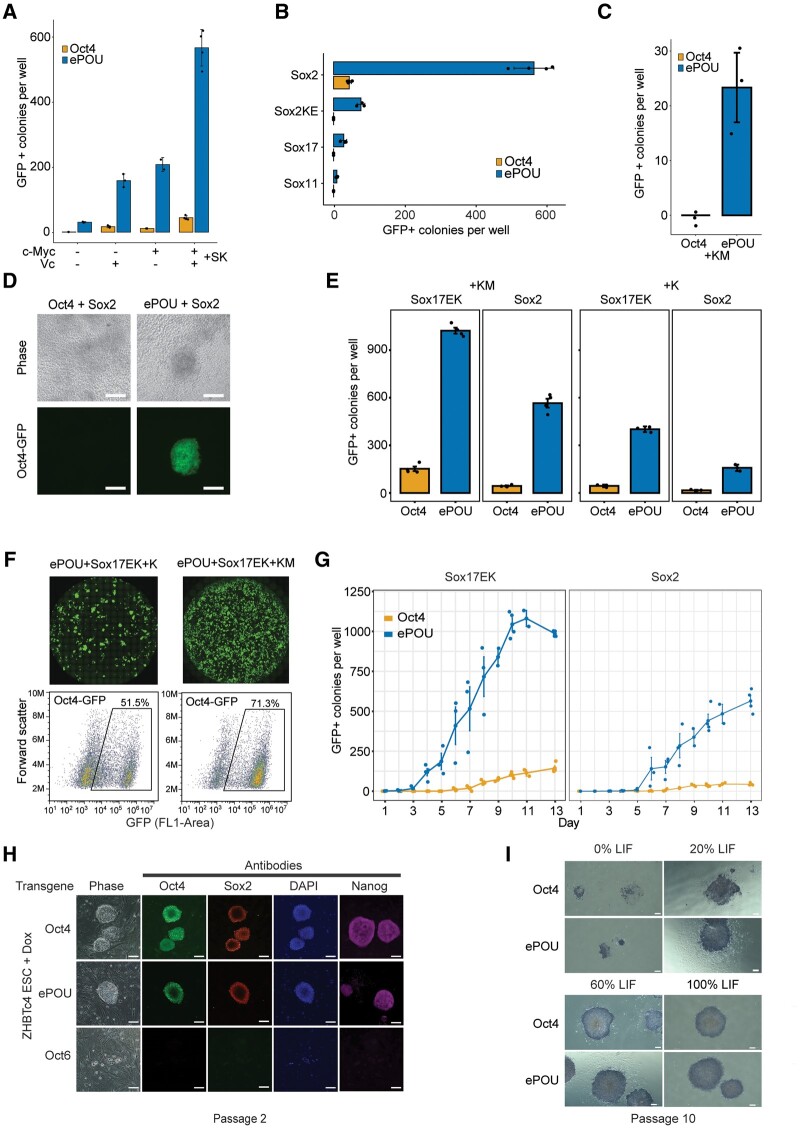Fig. 2.
ePOU outperforms Oct4 in a range of reprogramming conditions. (A–C) Colony count data of pluripotency reprogramming experiments: (A) in the absence or presence of c-Myc and Vitamin C, (B) using Sox factors that compromise iPSC generation in the presence of WT Oct4 (Sox2KE, Sox17, and Sox11) in four-factor conditions, and (C) Three-factor conditions omitting Sox factors. (D) Oct4-GFP+ fluorescence images of iPSC colonies generated with two-factor reprogramming of Oct4+Sox2 (left) and ePOU+Sox2 (right) cocktails (scale = 100µm). (E) Oct4-GFP+ colony count data for reprogramming experiments to evaluate synergies of eSOX (Sox17EK) and ePOU in the absence or presence of c-Myc. (F) Whole well Oct4-GFP fluorescence scans and fluorescence-activated cell sorting (FACS) with GFP channel for ePOU/Sox17EK combinations in the absence or presence of c-Myc. (G) Time course of GFP+ colony counts from day 1 to day 13 in four-factor conditions. (H) Colonies of ZHBTc4 ESCs transduced with Oct4, ePOU, or Oct6 in the presence of Dox and 100% LIF (10 ng/ml) after two passages, stained with indicated antibodies (scale = 80 µm). (I) Alkaline phosphatase staining of ZHBTc4 ESC colonies transduced with Oct4 or ePOU at varying concentrations of LIF at passage 10 (scale = 200µm). In (A–C, E), data are mean ± SEM of three biological replicates with 2–3 technical replicates each. Colonies are counted at day 13 of reprogramming. O, Oct4; S, Sox2; K, Klf4; M, c-Myc; Sox2KE, Sox2 K57E mutant defective in Oct4 heterodimerization; Sox17EK, Sox17 E57K mutant with enhanced pluripotency reprogramming capacity; ESC, embryonic stem cells; LIF, Leukemia inhibitory factor; Dox, doxycycline.

